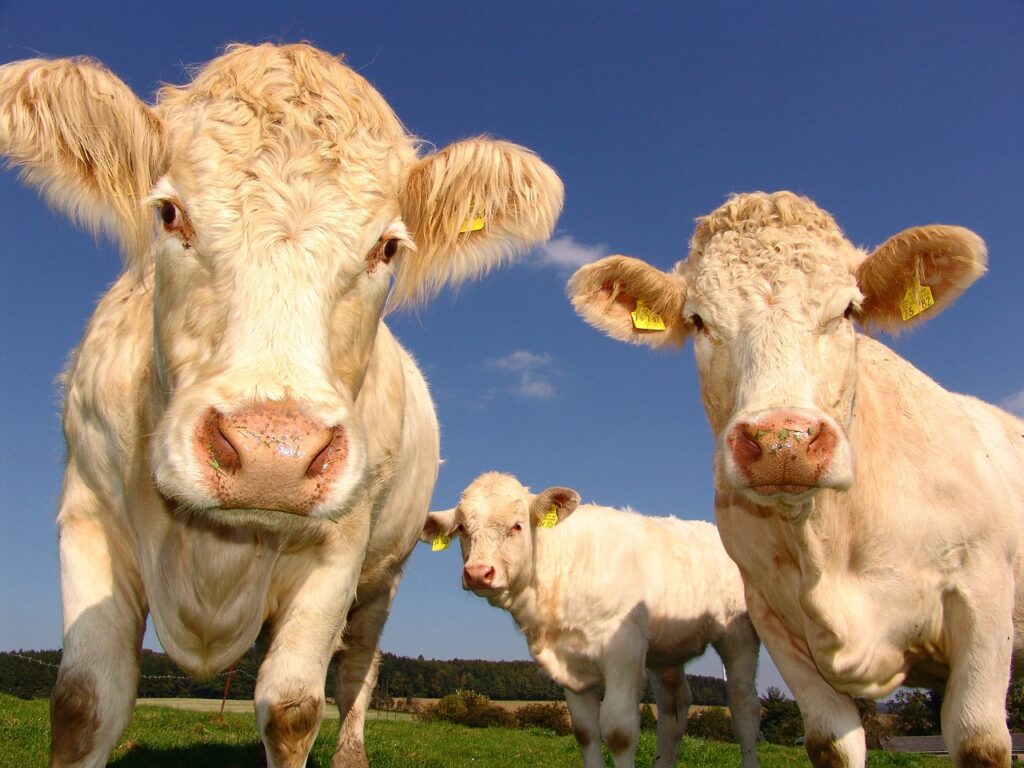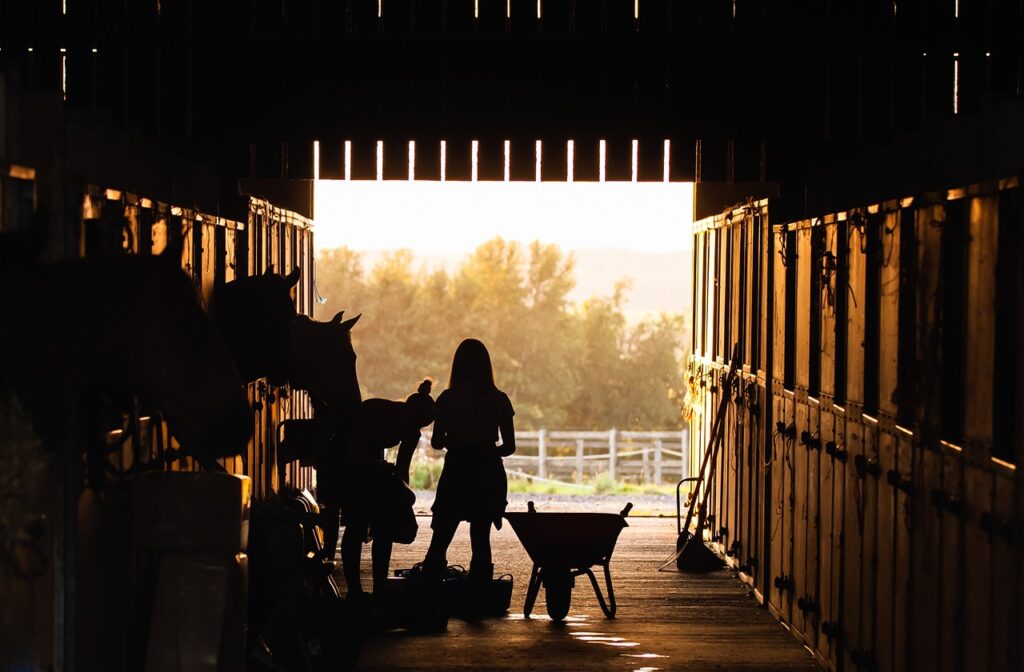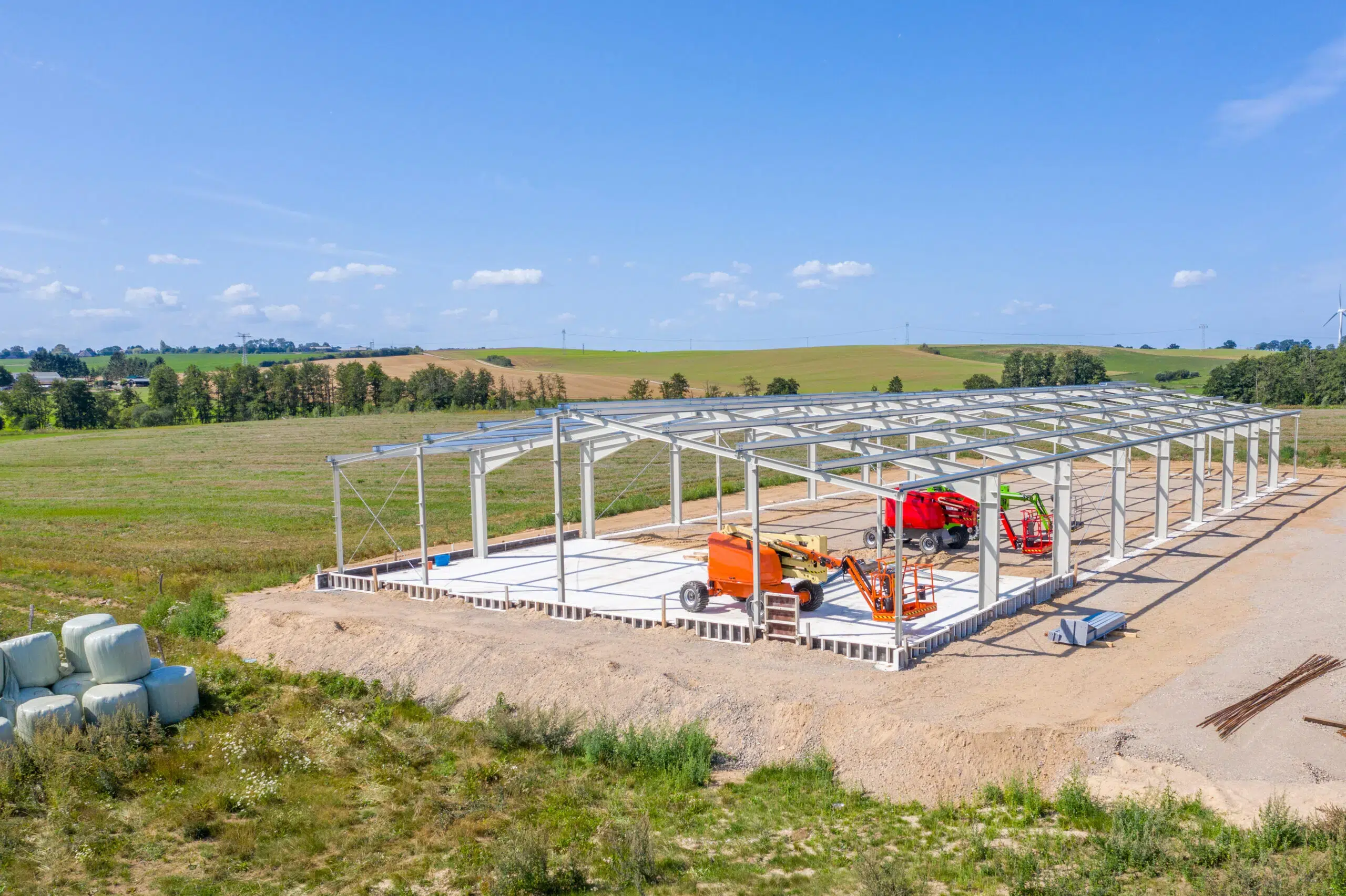Farm storage buildings and their efficient designs are essential for agricultural operations as they provide a secure and efficient space to store various items including livestock supplies, crop and harvest equipment, and farming tools and machinery.
These buildings help protect valuable assets and contribute to the farm’s overall success and productivity.
In this article, we will explore the importance of farm storage buildings, the key elements that make them functional, special features for different farming needs, and the significance of climate control within these structures.
Table of Contents
- Overview of Farm Storage Buildings
- Key Elements of a Functional Farm Storage Building
- Special Features for Different Farming Needs
- Climate Control in Farm Storage Buildings
- Conclusion
- Frequently Asked Questions
Overview of Farm Storage Buildings
Farm storage buildings are prevalent across many agricultural regions of the United States, but they are particularly common in states with significant farming activity. Some key areas include:
- Florida: With 9.7 million acres of farmland, Florida has a high demand for agricultural storage buildings. These structures store machinery, house livestock, and protect crops from the elements.
- Pennsylvania: The state has a rich agricultural history, and farms often feature numerous outbuildings and specialty structures. These include barns, butcher houses, cider houses, poultry houses, and combination structures that serve multiple purposes.
- Kentucky: Farm buildings are a common sight on country roads in Kentucky. The state has various farm structures, including hay barns, cattle barns, brooder barns, horse barns, milking parlors, workshops, and equipment storage buildings.
- North Carolina: The state has seen a rising popularity of metal buildings for farming and business uses. These structures include storage sheds, workshops, garages, barns, and carports.
Farm storage buildings serve various purposes, including protecting expensive machinery from the elements, housing livestock, storing crops and feed, and providing workspace for farm operations.
The specific types and designs of these buildings may vary depending on the region’s climate, the farm’s primary products, and local agricultural practices.
Check out: All About Hay Storage Buildings
Understanding the Importance of Farm Storage Buildings
Farm storage buildings play a crucial role in ensuring the smooth operation of agricultural businesses.
They provide a safe and organized space to store essential items, protecting them from weather-related damage, theft, and pests.
Without proper storage facilities, farmers would struggle to maintain the integrity of their supplies and equipment, leading to potential financial losses and decreased productivity.
Check out: Navigating Building Permits For Agricultural Buildings
Role of Storage Buildings in Farm Operations
Farm storage buildings serve multiple purposes in day-to-day farm operations. Firstly, they provide a centralized location for storing livestock supplies such as feed, medicine, and bedding.
This ensures that these resources are easily accessible, allowing for efficient livestock management. Farmers can rest assured knowing that their livestock’s needs are met promptly and conveniently.

Secondly, these buildings house crop and harvest equipment, including tractors, combines, and sprayers.
Storing this equipment in a dedicated space protects it from exposure to the elements and prevents premature wear and tear.
By safeguarding their machinery, farmers can extend the lifespan of their equipment and reduce maintenance costs. This, in turn, allows them to allocate more resources towards other aspects of their farm operations.
Thirdly, farm storage buildings are essential for housing farming tools and machinery. From small hand tools to larger machinery like plows and cultivators, having a dedicated storage area keeps these items in good condition, easily accessible, and reduces the risk of loss or damage.
Imagine the frustration of a farmer searching for a specific tool amidst a cluttered workspace. With a well-organized storage building, tools can be neatly arranged, saving valuable time and effort.
Did You Know?
The global market for agricultural steel buildings is expected to grow at a rate of approximately 5.2% annually, with over 60% of new agricultural buildings in North America being constructed using steel.
Factors Influencing the Need for Storage Buildings
The need for farm storage buildings is influenced by several factors. The scale of the farm operation is a primary consideration.
Larger farms, with a significant amount of livestock and extensive crop production, require more storage space to accommodate their needs.
Adequate storage capacity allows farmers to efficiently manage their resources without the constraints of limited space.
Similarly, farms that operate in regions with unpredictable weather patterns may require additional storage to protect their supplies from adverse conditions.
Unforeseen weather events, such as storms or heavy rainfall, can damage crops and equipment. Having sufficient storage buildings allows farmers to safeguard their valuable assets and minimize potential losses caused by unpredictable weather.
Furthermore, the specific needs of the farm operation play a role in determining storage requirements.
Farms that focus on livestock production may require larger storage buildings to house feed and bedding supplies. These buildings can be designed with features such as proper ventilation and temperature control to ensure the quality and freshness of the stored farm supplies.
On the other hand, farms focused on crop production may need more space to store equipment and harvested crops. Adequate storage capacity for crops is crucial to prevent spoilage and maintain their market value.
Additionally, farms that engage in multiple agricultural activities may require versatile storage solutions to meet various needs.
A storage building with adaptable features, such as adjustable shelving or partition walls, can accommodate different types of supplies and equipment.
This flexibility allows farmers to optimize their storage space and efficiently manage their diverse agricultural operations.
Key Elements of a Functional Farm Storage Building
A functional farm storage building should have a design that meets specific requirements, ensuring optimal storage and accessibility.
Several key elements contribute to the overall functionality of these structures, including size and space considerations, material selection for durability, and design and layout for efficiency.
Size
When determining the size of a farm storage building, it is crucial to consider both current and future needs.
Assessing the amount of livestock, equipment, and supplies that require storage will help determine the appropriate size.
It is often recommended to allocate extra space to accommodate future growth and potential expansion of the farm operation.
Space Utilization
Efficient space utilization within the storage building is also vital. Implementing shelves, racks, and storage systems can help maximize the available space and ensure easy access to stored items.
Additionally, leaving designated pathways allows for safe movement within the building and prevents potential accidents or damage caused by cramped conditions.
Moreover, the layout of a farm storage building should be carefully planned to optimize functionality.
Consideration should be given to the flow of operations, ensuring that the building allows for a smooth and efficient workflow. This includes strategically placing workstations, equipment, and storage areas to minimize unnecessary movement and maximize productivity.
Materials
The choice of materials for farm storage buildings significantly impacts their durability and longevity.
Opting for high-quality materials such as steel, concrete, or prefabricated metal panels ensures resilience against harsh weather conditions, pests, and potential damage.
These materials are known for their strength, resistance to corrosion, and ability to withstand external pressures, thus safeguarding the stored goods and equipment.
Maintenance
Regular maintenance, including inspections for damage and repairs, is crucial to prolong the lifespan of the storage building.
Repairing any structural issues, replacing damaged components, and applying protective coatings as needed will contribute to the building’s long-term durability.
Additionally, incorporating sustainable design elements, such as rainwater harvesting systems or solar panels, can enhance the environmental sustainability of the farm storage building.
Design and Layout of Farm Building
The design and layout of a farm storage building should prioritize business efficiency and accessibility. It is important to design the building with easy access points, including wide doors and proper loading and unloading areas.
This facilitates the movement of equipment and supplies and ensures efficient operations.
Furthermore, the interior layout should be organized and tailored to the specific storage needs. Implementing proper ventilation systems, such as fans or vents, helps regulate temperature and humidity levels, protecting stored goods from spoilage or damage.
Adequate lighting is also important to enhance visibility and safety within the storage building.
Consideration should also be given to potential hazards.
Proper labeling of storage areas and hazardous materials, installation of safety equipment, and implementation of fire prevention measures are crucial to protect both stored items and personnel.
Check out: Price Guide For Steel Agricultural Buildings
Special Features for Different Farming Needs
Recognizing that different farming operations have specific requirements, farm storage buildings can be customized with special features to meet diverse needs.
Depending on the nature of the farm, special storage areas can be incorporated to address unique demands.
Storage for Livestock Supplies
For farms that focus on livestock production, incorporating dedicated storage areas for livestock supplies is essential.
These areas can include shelving units for storing feed bags and bins for storing bulk feed. Additionally, separate compartments for medication and veterinary supplies ensure easy access and proper organization, facilitating efficient livestock management.
But it doesn’t stop there. To further enhance the storage capabilities for livestock supplies, some farm storage buildings offer temperature-controlled areas.
The specialized compartments of these farm buildings have designs that allow the storage of perishable items such as vaccines and medications that require specific temperature conditions to maintain their effectiveness.
With this feature, farmers can have peace of mind knowing that their livestock supplies are stored in optimal conditions, ensuring the health and well-being of their animals.

Storage for Crop and Harvest Equipment
For farms engaged in crop production, specialized storage areas for crop and harvest equipment are vital.
These areas can include racks or designated slots for storing small tools, such as pruners and shears, and larger equipment, such as planters and harvesters.
Properly organizing and storing this equipment not only protects it from damage but also saves valuable time by ensuring easy access during planting and harvesting seasons.
But wait, there’s more! Some farm storage buildings go above and beyond by incorporating maintenance areas within the storage space.
These designated areas are equipped with workbenches, tool chests, and even wash stations, allowing farmers to perform routine maintenance and repairs on their crop and harvest equipment conveniently.
This added convenience not only saves time but also ensures that the equipment is always in top-notch condition, maximizing its lifespan and performance. Consideration should also be given to the storage of harvested crops.
Depending on the type and quantity of crops, storage areas can be customized with appropriate shelving or bins to prevent spoilage and ensure proper airflow and ventilation.
Storage for Farming Tools and Machinery
Farms that rely heavily on various tools and machinery can benefit from dedicated storage areas for these items.
Well-designed tool racks and cabinets keep smaller tools organized and easily accessible. Additionally, incorporating larger storage spaces for machinery, such as tractors or sprayers, helps protect these valuable assets from exposure to weather and potential theft.
But that’s not all. Some farm storage buildings take it a step further by integrating smart technology into the storage space.
With features like remote monitoring and control systems, farmers can keep track of their tools and machinery even when they’re not on the farm.
This technology allows them to receive real-time notifications about any unauthorized access or potential malfunctions, ensuring the security and proper functioning of their equipment.
As you can see, farm storage buildings can be customized with a range of special features to cater to different farming needs.
Whether it’s livestock supplies, crop and harvest equipment, or farming tools and machinery, these specialized storage areas provide farmers with the convenience, organization, and peace of mind they need to run their operations smoothly and efficiently.
Check out: A Guide To Farm Equipment Storage Sheds
Climate Control in Farm Storage Buildings
Proper climate control within farm storage buildings is essential to maintain the quality and integrity of the stored goods.
Temperature regulation, insulation and ventilation, and humidity control are critical factors to consider for optimal storage conditions.
Insulation and Ventilation Basics
An insulated farm storage building helps regulate temperature, prevent condensation, and protect stored items from extreme heat or cold.
High-quality insulation materials, such as foam panels or fiberglass, provide a barrier against temperature fluctuations and minimize energy loss.
Proper ventilation is equally important as it helps control moisture levels, reduces humidity, and prevents the buildup of mold and mildew. Incorporating windows, vents, or fans facilitates air circulation, ensuring that stored goods remain dry and in optimal condition.
Temperature Regulation for Stored Goods
Depending on the type of goods being stored, maintaining specific temperature ranges may be necessary.
For example, perishable items may require refrigeration or cooling systems, while certain chemicals or medications may require temperature-controlled storage areas to maintain their efficacy.
Implementing temperature-monitoring systems within the storage building can provide real-time data and alerts to ensure temperature-sensitive items are properly stored, preventing spoilage or damage.
Did You Know:
The ideal temperature for items like grains, cereals, and canned goods is around 50°F (10°C). However, 70°F (21°C) is also adequate for most dry products.
Humidity Control for Optimal Storage
Controlling humidity levels within the storage building is crucial, especially for items vulnerable to moisture damage.
Excess humidity can lead to the growth of mold, mildew, and the degradation of certain materials. Implementing dehumidifiers or moisture-absorbent materials can help maintain proper humidity levels for optimal storage conditions.
Conclusion
Farm storage buildings are vital components of agricultural operations as they provide a secure and efficient space to store essential items.
Understanding the importance of these buildings, considering key elements such as size, materials, and design, and incorporating special features tailored to specific farming needs contribute to their functionality and effectiveness.
Additionally, maintaining proper climate control, including insulation, ventilation, and temperature and humidity regulation, ensures the longevity and quality of the stored goods.
Investing in well-designed and well-maintained farm storage buildings ultimately leads to increased productivity, enhanced asset protection, and overall success within the agricultural industry.
SteelCo has more than 23 years of experience dropshipping customizable steel building kits for farm storage buildings.
Our team of experts, with 100+ years combined experience, can provide specialized assistance with the initial basic concept/design, navigating construction timelines, and providing stamped engineering plans to simplify the process of obtaining necessary building permits and licenses.
Learn more about our industry expertise in agricultural buildings.
—————————-
Frequently Asked Questions
What permits do I need to build a farm storage building?
Permit requirements vary depending on your location and the size and type of building. Check with your local building department before you buy a storage building.
How much does a farm storage building cost?
Building materials typically cost from $17 to $20 per square foot, depending on the type and complexity of the storage building. Basic storage structures are on the lower end, while specialized facilities are on the higher end.
What are the benefits of using steel for farm storage buildings?
Steel buildings are durable, cost-effective, and require less maintenance compared to traditional wooden structures. They also offer better protection against weather and pests.
























